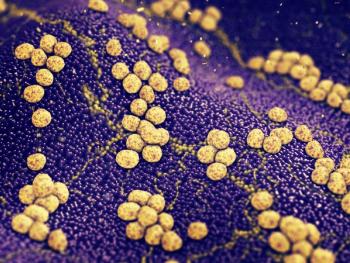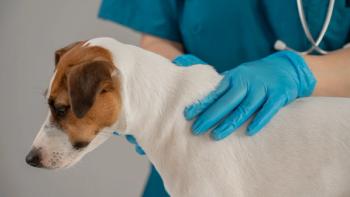
Dermatologic diagnostics: maximizing results from skin scrapings to biopsies (Proceedings)
There are many reasons to perform dermatologic diagnostics: to guide therapeutic choices, to make decisions regarding further diagnostic testing, to judge response to therapy as well as to actually make a diagnosis! Incorporating these tests into a busy practice schedule mandates that these tests be quick and easy to perform, useful information must be gained in an efficient manner and the results must be easily interpreted within the medical record.
Why should I perform dermatologic diagnostics?
There are many reasons to perform dermatologic diagnostics: to guide therapeutic choices, to make decisions regarding further diagnostic testing, to judge response to therapy as well as to actually make a diagnosis! Incorporating these tests into a busy practice schedule mandates that these tests be quick and easy to perform, useful information must be gained in an efficient manner and the results must be easily interpreted within the medical record. The basic and most commonly used tests include skin scrapings, surface cytology (ears, skin) and trichograms.
Skin scrapings
When appropriately performed, negative skin scrapings will rule out canine demodicosis. Skin scrapings for demodicosis are focused on lesional areas (select a minimum of 3 lesions consistent with folliculitis) and are deeper than those for surface dwelling parasites. In contrast, broad superficial scrapings are performed for sarcoptic mange; negative skin scrapings in this instance DO NOT rule out scabies as a differential diagnosis for intense pruritus. In order to maximize results when performing superficial skin scrapings to locate scabies mites, focus on heavily crusted areas such as elbows or ear margins.
Surface cytology
Cytology is your friend! In order to make this sampling technique useful, apply a few rules.
• Only sample areas where, depending upon the results, you will change your therapeutic plan.
• This technique is most useful for surveying areas for Malassezia spp. organisms. A negative surface cytology sample does not rule out a bacterial pyoderma since most organisms are below the surface layers of the skin.
• Use an adhesive technique to maximize organism recovery, such as clear acetate tape or Durotak® adhesive slides manufactured by Delasco. **These preparations are not placed into the fixative solution during the staining process. • If the area is moist or excessively greasy, firmly press a plain glass slide to the area and heat fix prior to staining with Diff Quik® stain.
• Roll out the swabs from both ears on a single slide to minimize staining and microscope time: place the sample from the left ear on the left side of the slide and from the right ear on the right side of the slide. Remember to heat fix these prior to examination under 1000x magnification with immersion oil.
Papule/ Pustule cytology
This technique is very useful when differentiating infectious causes for papules/ pustules from allergic papules and pustules caused by autoimmune disease (pemphigus foliaceus).
• Degenerate neutrophils with intracellular cocci = requires oral and/or topical antibiotic therapy.
• Nondegenerate neutrophils without bacteria, but with acantholytic keratinocytes = requires skin biopsy for histopathology and culture (aerobic and fungal).
• Eosinophils without evidence of organisms = most likely a lesion associated with an allergic response, such as insect exposure.
• Some neoplasias can appear papular prior to forming nodules—consider skin biopsy for histopathology if the cells do not appear consistent with an inflammatory response.
• Deeper lesions associated with a deep pyoderma, such as those that drain or bleed easily may reveal pyogranulomatous inflammation. Any cause of follicle rupture resulting in furunculosis can create this lesion. Both deep pyoderma and fungal kerions can be the cause for abundant neutrophils and macrophages found on cytology. If intracellular cocci and eosinophils are also present, this implies a foreign body reaction, such as the reaction to free hair and keratin found with interdigital lesions of pododermatitis, which will require weeks to months of antibiotic therapy. If bacteria are not identified, consider a fungal culture to rule out dermatophytosis as an infectious cause.
Nodule cytology
Every lump and bump deserves a fine needle aspirate. The majority of these lesions will also require biopsy for histopathology in order to make a final diagnosis, however it is helpful to be able to anticipate a diagnosis of neoplasia or something infectious or immune-mediated (sterile) in advance. A mast cell tumor is typically easily identifiable and proper surgical plans can be made prior to removal, whereas a sterile or infectious cause will require aerobic and fungal cultures in addition to histopathology to make the diagnosis. **Tip—a sterile disease cannot be declared sterile if cultures have not been performed.
Trichograms
This technique is as simple as pulling a few hairs from lesional sites, laying them out straight in a drop of mineral oil and covering with a cover slip. The hairs are then examined with the 10x objective, just like skin scrapings. Hairs with ectothrix spores, indicative of a dermatophyte infection (usually Microsporum canis) can be identified this way, indicating the need for fungal culture. In addition Demodex spp. mites can also be found clinging to the hairs in affected animals. This is very useful when the only lesions of folliculitis are present around the mouth or eyes where skin scrapings can be technically challenging.
Fungal cultures
This technique is used to diagnose dermatophytosis in both large and small animals. The diagnosis should always be confirmed with microscopic examination of the fungal hyphae for macroconidia. The ideal media for this technique is a tray-style cassette containing both DTM (dermatophyte test media) and Sabouraud's media (SAB-DUET) manufactured by Bacti-Lab (
A Wood's light examination may be used prior to fungal culture in order to improve selection of hairs that fluoresce. This is not essential, as only some isolates will be identified with Wood's lamp. In addition, the area to be sampled should be lightly prepared with an alcohol cotton ball or gauze and allowed to dry prior to plucking hairs for fungal culture. This is especially important in large animals to prevent isolation of environmental fungi.
All about allergy testing…
The basics:
1. What is the purpose of allergy testing?
• To formulate a vaccine for hyposensitization therapy (allergen specific immunotherapy, or ASIT).
• This diagnostic tool is not used to diagnose allergic disease.
o Positive reactions reflect exposure.
o False positive reactions commonly occur.
o Positive reactions don't identify the cause of the pruritus…
o Atopy (environmental allergy) is a diagnosis of exclusion.
2. Food allergy (cutaneous adverse reaction to food) is not diagnosed with serum or intradermal testing. An elimination diet trial is the only way to rule in or rule out food allergy/ food intolerance.
3. When to consider allergy testing
• When all "itchy" diseases have been ruled out. This includes scabies, cutaneous adverse reaction to food and yeast dermatitis. Ensure all secondary infections have been identified and treated. Cases with seasonal pruritus only. Cases with a complete response to steroid therapy.
• Use caution—a truly food allergic patient can also respond to steroid therapy!!
4. How is allergy testing performed?
• Serum testing - This testing methodology is still problematic and false positive results continue to complicate interpretation of this technique.
• Intradermal injections
o Withdrawal times: antihistamines = 14 days, topical or oral steroids = 21 days, Oral steroid withdrawal is dependent upon the dose, duration and potency of the oral steroid administered. Injectable steroids = 6 weeks
i. Light sedation is required in most cases.
ii. Immediate reactions are read at 15 minutes; delayed reactions can occur 48 hours later—this is common with flea antigen (usually a positive immediate reaction as well). Intravenous fluorescein aids in reading test results in cats.
The allergic patient can present with myriad symptoms, all related to the underlying cause. As is the case with atopic dermatitis, the symptoms manifested result from an "overproduction" of allergen specific IgE to environmental allergens. Cutaneous adverse reactions to food (ARF) are a result of either "true" food allergy related to the overproduction of food allergen specific IgE, or a food intolerance which is not a true immunologic reaction. Patients with flea allergic dermatitis produce excess IgE in response to flea saliva and display clinical signs somewhat distinctive to the syndrome. However, overlap can occur between the 3 allergic syndromes and it is not uncommon to encounter a patient that suffers from both atopic dermatitis and adverse reactions to food that also experiences a seasonal flare consistent with exposure to fleas. The symptoms that are typically reported by the owner that are attributed to the previously diagnosed allergic diseases are then that much more intense and often are much more controllable with the institution of appropriate flea control measures. Thus recognizing, addressing and managing the threshold effect of pruritus stimulators is key to success.
The initial workup:
Proceeding with a working diagnosis of allergic disease:
The basics of dermatohistopathology (or..what do the biopsy results tell me to do next?).
Using skin biopsy as a diagnostic tool can be likened to a mystical event. When the correct lesions are selected, a detailed and specific history is provided and a clear and concise report is generated, the stars are aligned and a diagnosis is made. It may seem that way, but the process doesn't have to be this mysterious and beyond our control. We can greatly improve the results obtained with skin biopsies by following a few simple rules. In addition, submitting samples to a dermatohistopathologist can also greatly enhance the results obtained as they are accustomed to reviewing mostly skin biopsies as well as current with newly reported diseases.
• Histopathology is most reliable when utilized for diagnosing:
– Neoplastic diseases
– Auto-immune or immune-mediated diseases
– Deep infections when organisms are visible, such as blastomycosis, etc.
• Histopathology is NOT sensitive or specific for the diagnosis of:
– Allergic diseases or Endocrine diseases
• A diagnostic sample includes:
– At least 3 pieces of tissue obtained with a 6mm Baker's biopsy punch instrument—use a 4mm punch for footpads and nasal planum to avoid disfigurement.
o Biopsy EVERYTHING that looks different
– Relevant clinical history and digital photographs if available
o Describe the distribution of lesions and any differential diagnoses—communicate with the pathologist.
– Well-preserved samples, non-traumatized samples
o Place onto tongue depressors or pieces of index card and suspend upside down in formalin to preserve architecture and orientation.
The goal of the pathology report is to describe ALL normal and abnormal features of the sample as well as commit to a morphologic diagnosis. The morphologic diagnosis is a descriptive diagnosis from which a differential diagnosis list can be formulated based upon clinical signs and history provided to the pathologist.
Newsletter
From exam room tips to practice management insights, get trusted veterinary news delivered straight to your inbox—subscribe to dvm360.




